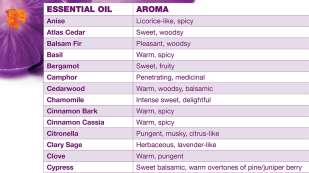Use coupon code CARDAMOM with your purchase of $40 or more for a free†
Cardamom OilFormulating with Natural Preservatives

Modern preservative safety
The use of cosmetics is not a modern phenomenon. Ancient Egyptian women used kohl to darken their eyelids, and Cleopatra is said to have bathed in milk to whiten and soften her skin. More than 3,000 years ago Greek women used poisonous lead carbonate to achieve a pale complexion. We’ve come a long way since these early days of cosmetic experimentation. Today NOW formulators use the latest science and safety data to produce effective natural cosmetic products, and a big part of their job is the development of natural preservative systems for personal care products that are safe for daily use.
Why use preservative?
Preservatives perform an important function in cosmetics preparations and are an indispensable ingredient. One of the most important things to remember is that a cosmetic product must be safe for use. Any product manufactured without a preservative to prevent and control microbial growth is at risk for microbial contamination, and some of these organisms may be potentially dangerous. A variety of undesirable organisms including yeasts, fungi and bacteria such as E. coli, Pseudomonas, Staphylococci and Streptococci have been identified in cosmetic preparations. Microbial contamination can also lead to product instability such as separation, discoloration, and formation of gasses and odors.
Microbial contamination of a cosmetic product can occur in numerous ways: if the customer usage and storage of cosmetics and skin care is lax; by not taking care to fully reseal a bottle lid; using unwashed fingers to remove and apply a cream or lotion from the container; storage in the bottom of a handbag, the glove compartment of the car, or in a damp bathroom cupboard. All these create potential breeding grounds for bacteria of all kinds.
Preservation is especially important in natural products with a lot of moisture, which can serve as a growth medium for bacteria and molds if not protected. There is a downside to some preservatives, since in susceptible people they can cause allergies, dermatitis, and other side effects. Certain ones work only in specific conditions, such as a low pH (high acidity).
The important word regarding preservatives is "balance"; with enough preservative necessary to control microbial growth, yet not too much so as to cause reactions or side effects. One such evaluation, called AET or Antimicrobial Effectiveness Testing, will aid in determining if this balance has been achieved. At NOW we use this method to assure preservative effectiveness.
Developing our own natural preservative system
While certain synthetic preservatives such as parabens are relatively mild to the skin, certain others, such as formaldehyde donors, are not. Regardless, at NOW we actively avoid the use of such synthetics in our cosmetics, instead focusing on the development and use of natural and naturally derived preservatives.
Plant-derived preservatives are commonly used in personal care products; and while they can be very effective, they can also be harsh to the skin. Because of this undesirable attribute, we launched an ambitious project several years ago to develop a natural preservative system that is both effective yet mild to the skin.
Many different preservative candidates were reviewed. They ranged from essential oils with compounds that possess antimicrobial properties, to plant extracts, amino acid derivatives and enzymes. Potential ingredients were tested in a unique cosmetic emulsion that’s very sensitive to microbial contamination, making it an ideal test medium.
The essential oils clove, cinnamon, oregano and thyme are known for their antimicrobial properties. These oils, and their major active components, were formulated at various concentrations in our test cosmetic emulsion. Also evaluated in this test emulsion were various citrus plant extracts and birch extracts. Surprisingly, when subjected to the AET protocol, these all demonstrated either little or no preservative action. The birch extracts performed poorly as well. The AET protocol calls for a specific reduction, or elimination, of five test microbes and these candidates failed in this respect.
Amino acid derivatives were also tested. One derivative, specifically lauric arginate, showed excellent preservative properties. It functioned well at the 4 – 7 pH range, is very mild, and is all natural. One drawback is it cannot be used with certain ingredients. Another approach was the use of a unique enzyme/substrate combination. This system was found to be effective in creams, lotions, and oral care products; however it only functions in a 4.0 – 6.0 pH range.
Ongoing evaluation
Certain peptides are currently being evaluated with excellent results so far. They function at a 3.5 – 7.5 pH range, are very mild, and appear to work well with all cosmetic ingredients. The evaluation is currently being expanded to cover a broad cosmetic spectrum, as well as determining synergy with other cosmetic ingredients.
While it was found that there is no one broad-spectrum all-natural preservative, it appears that a combination of natural preservatives could be effective when combined with either certain cosmetic ingredients or very mild and safe synthetic preservatives.
Synthetic preservatives known to be allergens or sensitizers that we don’t use at NOW include:
2-Bromo-2-Nitropropane,
5-Bromo-5-Nitro-1,
Acid Ammonium Sulphate
Bromidox
Butylated Hydroxytolulene
Dichlorobenzyl Alcohol
DMDM Hydantoin
Imidazolidinyl Urea
Methylchloroisothiazolinone
3Diol 3-Ido-2-Propynl Butyl Carbonate
3Dioxane Benzalkonium Chloride
Butylparaben
Diazolidinyl Urea
Ethylparaben
Isobutylparaben
Methylparaben
Methylisothialinone
Propylparaben
Quaternium-15
Sodium Dehydroacetate











